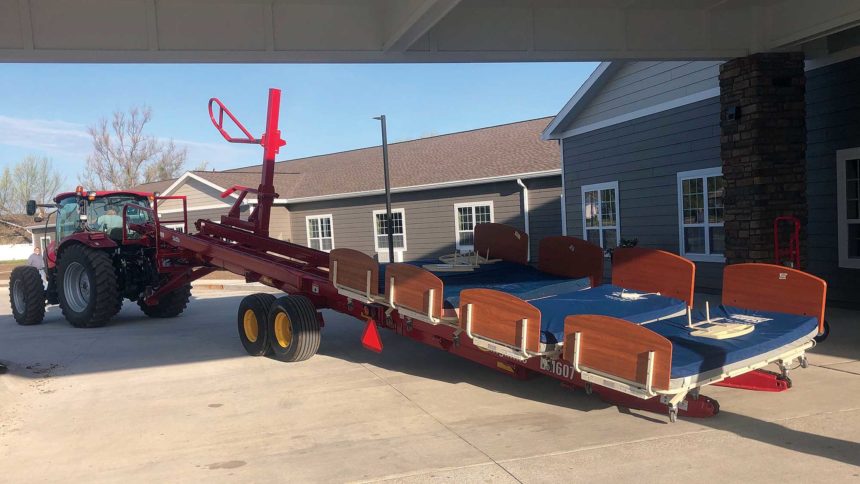
Eldercare community development has become so corporate that it’s refreshing to learn about local projects making a difference. The recent completion of the new Burwell Community Memorial Health Center in the heart of Nebraska is one such case.
With its roots as a hospital starting in 1952, the nonprofit organization Burwell CMHC has evolved to include skilled nursing, assisted living, short-term rehab, adult day care, respite care, hospice care, outpatient, bathing and transportation services.
The new $12.2 million, 52,000-square-foot building is located a few blocks away from the old site and features 58 skilled nursing rooms. Included are 18 for assisted living and 14 for memory care residents. Of the total cost, $10.2 million came from a direct loan by USDA Rural Development and $2 million from a local bank, backed by a guarantee from the rural development agency.
The new CMHC building opened in May 2019, designed with an open concept layout built around the two highest labor cost centers, nursing and dietary, says administrator Kally Cloeter. “The concept was to build an efficient physical plant that put residents and staff in the same place at the same time,” she says. “The halls are visible from the nursing station and there are no blind corners. The design also allows all equipment and supplies to be available to staff and all utilities and charting areas are centrally located to decrease the number of steps staff must take. That way they can spend more time with residents.”
It also reflects the trend for a skilled nursing facility to look like a senior living community but function like a hospital, Cloeter says, adding that the “external design is more residential in appearance.”
Getting a ‘bale’-out
Nothing is more emblematic of Burwell’s rural landscape and citizens’ cooperative spirit like moving day in mid-May. Sparked by an idea from maintenance supervisor Shawn Phillips, a team of volunteers from Burwell and surrounding towns creatively used bale retrievers — equipment commonly used at the area ranches — to move dozens of beds from CMHC’s former site to the new facility.
“We took a piece of ranch equipment and made it an integral part of the healthcare facility move,” Cloeter says. “It worked perfectly.”
On the incline
Burwell and Garfield County are going against migration trends — by expanding. The U.S. Census Bureau reported a 7% growth rate over the past decade, with a documented population of 1,210 for the city. This unprecedented growth is behind the USDA’s interest in funding the new CMHC property, says USDA state director Karl Elmshaeuser.
“With this project in Burwell … we are helping to ensure that more individuals and families have needed healthcare resources going forward,” he says. n
From the February 2020 Issue of McKnight's Long-Term Care News




